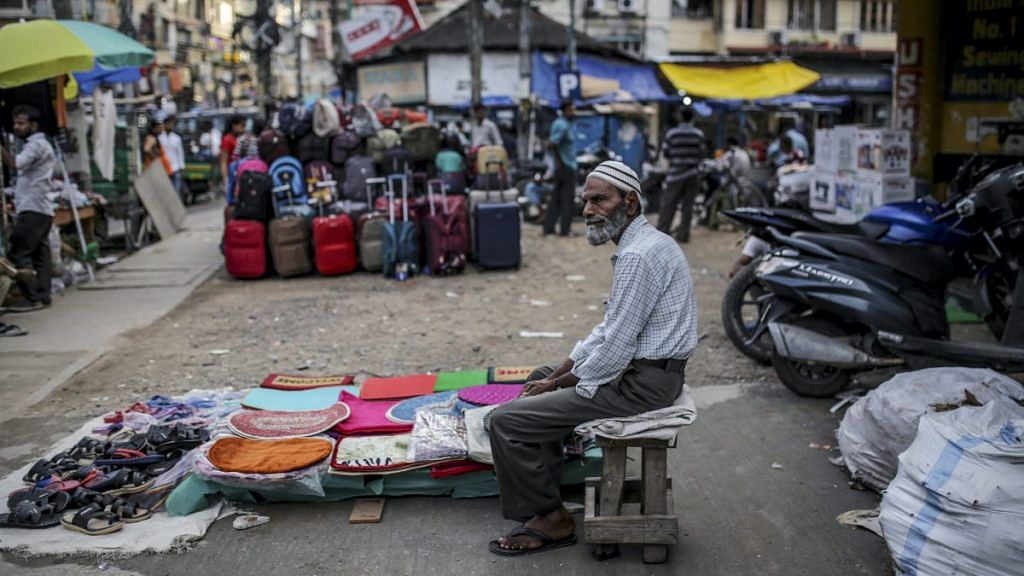The updated National Register of Citizens has propelled Assam into a vortex. The situation may seem calm on the surface, but it is replete with contradictions and dangerous undertones.
The final NRC list, released on 31 August, excluded 19.07 lakh people – less than six per cent of the total applicants – which is less than half of the 40 lakh excluded in the draft list.
Despite a meticulously planned exercise – exhaustive and exhausting in equal measure – this has turned out to be nobody’s NRC. It has also exposed its own inherent flaws, deepened the fault lines in the state, caused immeasurable chaos, and found absolutely no solution to Assam’s decades-long ethnic conflict. The only objective NRC has achieved is to further play to the gallery as far as the Assamese people’s fear of the ‘foreigner’ is concerned.
Based on my recent visit to Assam, these are my findings on the NRC process and the challenges it faces.
Also read: Stung by final NRC outcome, BJP readies new on-ground strategy for Assam
The inherent flaws
The exercise to update the NRC was detailed and long-drawn, requiring massive manpower, back-end support and logistical planning. The outcome, however, merely reveals the problems that have plagued the process.
One of the most confounding aspects of this updated NRC is how it has split families – into those who are genuine Indian citizens and those suspected to be foreigners.
Such cases are more a norm than an aberration, and can be found all over the state – mainly among religious and linguistic minorities like Muslims and Bengali Hindus. Despite submitting the same legacy data, fathers have made it to the list, but the children haven’t; some siblings are in and some aren’t.
This is inexplicable. Authorities argue that such cases are because of technical errors in the documents or when family members have been unable to prove their linkages adequately. An explanation that is hardly enough considering this is precisely the anomaly the claims and objections process under NRC should have resolved – a process that was supposed to be clear and fool-proof.
Second, the exercise has revealed how even a degree of subjectivity can be dangerous for something of this nature. In the NRC’s case, a lot rested with the disposing officer and her/his judgement, or in some cases, their biases. While there was a set of guidelines, ThePrint found people across villages felt the disposing officer’s ‘whim’ had put them at the receiving end.
Third, the entire legacy document issue is in itself problematic, making women, transgenders and the homeless particularly vulnerable. For women, who change their names after marriage, proving linkages through their ancestors has been particularly challenging, given that they couldn’t claim citizenship based on their husband’s family tree.
Fourth, the inability to verify documents at the back-end from where they were issued in time has meant many who had come from other states were excluded.
Fifth, there are cases of declared ‘foreigners’, who were sent to detention centres, making it to the final NRC. This shows how flawed the system of determining citizenship can be, especially when the exercise should have been conducted decades ago.
Sixth, because this was not an exercise of enumeration and put the onus of proving the citizenship on the people, there are many who never submitted their applications under the NRC and are thus out of this net.
Also read: 40,000 workers, 15 lakh hearings, 6 months — what it took to halve Assam NRC list to 19 lakh
Nobody’s NRC
Nobody seems to be willing to accept this outcome whole-heartedly. The All Assam Students Union (AASU), which spearheaded the 1979 Assam agitation, has rejected the NRC, calling the final figures of exclusion too low.
The ruling Bharatiya Janata Party (BJP) has also rejected it because it feels the final list has left out ‘genuine citizens’, that it excluded too many Hindus and included far more Muslims.
The All Assam Minorities Students’ Union (AAMSU) and the Assam Public Works (APW) too have questioned the process and the outcome of NRC.
Meanwhile, those who have been excluded – mainly Muslims and Bengali Hindus – obviously dismiss the NRC. Those who find their names in the list are not particularly grateful either, since they believe they anyway did not need to be told they were Indian citizens and feel there have been errors of inclusion and exclusion.
Also read: Assam passes on tradition of fearing the ‘foreigner’, millennials staunchly back NRC
Deepening fault lines
What the NRC has indeed successfully done is – show how Assam has successfully passed on the legacy of fearing the ‘foreigner’, even to generations born much after the peak of the anti-outsider anger.
“The bidexis (foreigners) need to be identified and sent back. We have suffered for generations. I heard this from my family and on TV when noise around the NRC began,” said 19-year-old Amita Baruah, a student of Gauhati University.
To that effect, the NRC exercise has only amplified this sentiment and brought the ‘indigenous people versus outsider’ debate back in focus.
It has also given a fresh impetus to the BJP’s plans to communalise this ethnic fault line. On the ground, this is now taking shape.
“This is what we are now going to say on the ground to the people: ‘Look at the final list, it has so many Muslims. You have lived in Assam all your lives. Don’t you know these Muslims are infiltrators? They have all come from either East Pakistan or later, Bangladesh’,” said a powerful local leader of Nagaon, who did not wish to be identified.
